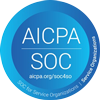By David Bliss
One of our clients asked us recently to provide them with some information highlighting Pega’s unique qualities. They know Pega, and they know broadly what it’s done for them, but in comparison to other vendors claiming to enable digital transformation and automate business processes, they said, they wanted a more clear understanding.
We dug in, realizing that while we—a consultancy that’s 100% dedicated to working on the Pega platform—know and love Pega to a rather nerdy degree, other customers may also be looking for a quick, clear take.
Here you have it: the ingredients to Pega’s ‘secret sauce’ and why it’s so special.
6 R Work Automation
At Rulesware, any time that we’re asked to analyze the future state of a client process, we ask ourselves if the “6 Rs”—a framework developed by Pegasystems to move clients from managing business processes to automating them—are covered in that new process. They outline the framework here.
- Receiving: This means accepting and capturing the essential data describing work from multiple channels. This often comes in different media and formats, ranging from keyboards or scanners, to external systems.
- Routing: Using characteristics of the work and knowledge about the workforce, routing then enables you to make intelligent matches and assignments.
- Reporting: Active real-time visibility of work in progress, work completed, productivity, bottlenecks, and quality.
- Responding: This means communicating status, requests for information, and progress to the work originator and to other people involved in the work, by email, fax, written mail, and other means.
- Researching: This ‘R’ is about accessing external systems and databases through connectors to support analysis and decision making.
- Resolving: You often need to respond through multiple channels, offering automated processing and automated support of users, completing the work and updating downstream systems promptly.
Case Life Cycle Management
Pega was designed to cater to the needs of an application’s end customers, as well as to its buyers. It was created on this premise: an application’s end customers don’t really care, in the end, about the systems that were built to serve them, but rather about achieving their end result. That’s why Case Life Cycle Management in Pega uses the idea of a Case as its operating metaphor. Each Case represents a piece of work for the end customer. The work could be simple, with just a few steps; or it could be complex, perhaps with a long lifecycle, involving parties inside and outside the organization who require data from many systems. Regardless of the work’s complexity, Pega’s native case management capabilities help to automate the work. The real beauty of this capability is the visibility it provides users, managers and even external customers regarding the status of work.
It’s pretty darned clever: great for business and technical users alike.
Watch the video for a more detailed overview of Case Life Cycle Management.
Situational Layer Cake (SLC) Architecture
Many of our clients past and present have expressed a need to develop business applications that serve many types of customers, for many reasons. They might need, for example, to use the same application for two very different audiences, asking us to focus it differently for those audiences. Or they may want to re-use what they have but adapt the application for a different audience based on the different geographies their serving.
This is generally tough to do with non-Pega systems. Instead of creating the capability once and letting the application determine where and when to use it, non-Pega systems must hardcode these requirements into their system. Consider this example: when you are building something and decide to weld rather than use screws, you are making the decision that future changes are unlikely.
Remember: nothing in business stays the same and adapting to change is a must.
Enter Pega’s game-changing Situational Layer Cake architecture. The SLC architecture allows you to determine when, where and how a business rule is used across channels, geographies and other business designations.
For us at Rulesware, it’s been a significant leap forward, enabling us to deliver faster on the applications that our clients most want and need.
Pegasystems outlines the architecture further in this video.

David Bliss is Vice President of Customer Success and Engagement for Rulesware, with more than 25 years’ experience in the software and service delivery industry, including 8 years with Pegasystems as a Healthcare Sales Executive.
Got a question about Pega, and how it can help to ignite digital transformation in your company? Get in touch.



